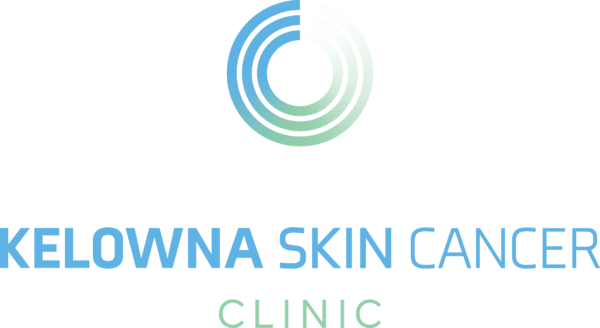SURGERY & BIOPSIES
The surgical route is common and efficient.
Skin cancer excision surgery is one of the most frequently used treatment options. It is often recommended because it can reliably remove the visible tumour along with a small margin of surrounding tissue. The goal is to fully remove the cancerous area to reduce the chance of it returning.

What to expect from this procedure.
Patients typically undergo one of two approaches used to remove skin cancer.
Routine surgery
In routine excision, the surgeon removes the tumour along with a small margin of surrounding tissue. The specimen is then sent to the pathology department at Kelowna General Hospital. A pathologist reviews the sample and confirms whether the cancer has been fully removed. In some cases, patients may need a second procedure if additional tissue needs to be excised.
Mohs Surgery (Not available in Kelowna)
Mohs surgery has a high cure rate for certain skin cancers and is performed in a sequence of precise steps. Patients remain awake throughout the procedure.
STEP 1: Examination & Preparation
The surgeon assesses the area and outlines the treatment site. Local anaesthesia is administered to numb the area completely.
STEP 2: Removal of the Top Layer
A thin layer of tissue is removed using a scalpel. Some cancers have deeper extensions not visible on the surface; these are identified through lab analysis.
STEP 3: Laboratory Examination
The removed tissue is sectioned, dyed, and mapped. It is then frozen, sliced into thin horizontal layers, placed on microscope slides, and stained for review. This step often takes the most time.
STEP 4: Microscopic Analysis
The surgeon examines the edges and underside of the tissue. If any cancer cells remain, the location is marked on the map.
STEP 5: Removal of the Next Layer
If needed, another thin layer of tissue is removed from the precise spot where cancer cells were seen. These steps are repeated until no cancer cells remain.
STEP 6: Wound Repair
Once the area is cancer-free, the wound is either left to heal naturally or closed with stitches. In some cases, a skin flap or assistance from a specialist (such as a plastic or oculoplastic surgeon) may be required, depending on the location and size of the wound.
Mohs surgery may be used for certain skin cancers, including:
- Some invasive or aggressive basal cell carcinomas
- Squamous cell carcinoma
- Lentigo maligna (a subtype of melanoma), in select cases
Diagnosing the affected area.
Physicians may perform a skin biopsy to help determine the type of lesion and guide next steps. A biopsy involves removing a small piece of tissue, or in some cases the entire lesion, so it can be examined by a pathologist. Three common biopsy methods are described below.
Punch Biopsy
A punch biopsy is used to sample or remove a lesion that may be suspicious for skin cancer. After a local anaesthetic is applied, a small, circular tool removes a core of skin that includes all layers. The site is typically closed with sutures. The sample is sent to a laboratory for pathological assessment.
Incisional Biopsy
An incisional biopsy removes only part of a larger lesion to help determine a diagnosis. The area is numbed with local anaesthetic, and the sample is obtained using either a punch tool or a small elliptical incision. The tissue is examined by a pathologist, and if an incompletely excised skin cancer is identified, your physician will discuss appropriate management options.
Excisional Biopsy
An excisional biopsy removes the entire lesion. After local anaesthetic is applied, the tissue is taken using either a punch tool or an elliptical incision. The specimen is sent to a laboratory to confirm the diagnosis and assess whether the margins are clear of tumour.
The considerations of surgery.
Both routine excision and Mohs surgery are effective approaches for treating certain skin cancers. Mohs surgery is not offered locally, so patients who require this method would need to travel to Calgary or Vancouver for care.
Explore more treatment options.
At Kelowna Skin Cancer Clinic, we offer a range of treatment approaches for different skin conditions. The most suitable option will depend on your diagnosis and clinical needs. Our team can help you understand what may be recommended for your situation.
